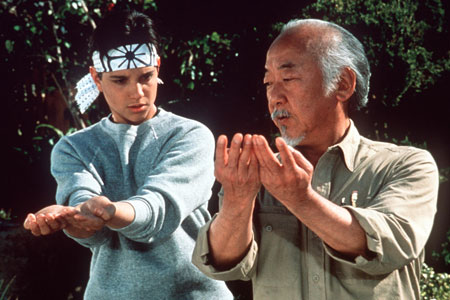I was recently asked this question by a pre-service teacher in the Saginaw Valley State University teacher mentor program: "What was a successful science experience in your classroom, and how did you measure that success?" The question really got me thinking, and I wanted to try and capture the essence of my thoughts.
Here it goes...
The essence of success in teaching and learning is student engagement. It is like the holy grail to have all the students engaged, especially in high school science. The highly engaging classroom will be the one that fosters the most success. When all students are engaged in a science experience, it is that very engagement which leads to their success with the experience. I measure success in the learning experiences created in my science classroom by the level of student engagement I observe. Lessons that are hands-on and utilize current technologies with which students are familiar have been most effective to successfully engaging students in the science content; furthermore, if the content is related to students’ lives, it will be more meaningful to them and they will be more engaged and thus successful with it.
Here it goes...
The essence of success in teaching and learning is student engagement. It is like the holy grail to have all the students engaged, especially in high school science. The highly engaging classroom will be the one that fosters the most success. When all students are engaged in a science experience, it is that very engagement which leads to their success with the experience. I measure success in the learning experiences created in my science classroom by the level of student engagement I observe. Lessons that are hands-on and utilize current technologies with which students are familiar have been most effective to successfully engaging students in the science content; furthermore, if the content is related to students’ lives, it will be more meaningful to them and they will be more engaged and thus successful with it.
One engaging science experience I have created for students dealt with electromagnetism and sound. Students had been learning about electromagnets, and the associated concepts were connected with concepts from the study of sound in our physics classroom through project-based learning. Students were challenged to build computer speakers using their knowledge of how speakers worked and the function of various materials. They were given the challenge of building a speaker that could play music from a computer using a given set of materials. Unexpectedly to students, the materials list consisted of a Styrofoam plate, some cardboard, sheets of printer paper, a few business cards, Scotch tape, speaker wire, ceramic disc magnets, and hot glue. Using what they knew from physics concepts and what they researched about the speakers and materials, students constructed speakers that had a Styrofoam plate cone, and a small voice coil all affixed to the cardboard in varying sizes and designs. After completion of the two-day project, students connected their speakers to an iPad 2 and played music through them.
My objectives for the lesson were for students to apply knowledge of their physics concepts, research properties of the given materials relative to the project, and problem solve to create a working speaker. In groups, the students met the objectives for the lesson and every group attempted to build a working speaker, though some speakers did not function as well as others in the end. The way I was able to gauge success in this lesson, however, did not come from the ends but rather the means of completing this project.
Some students attempted a design that they thought would work, but then learned quickly it had some critical flaw. Those students corrected their mistakes and accordingly adjusted their product. Additionally, I saw students start to share experience of difficulties with the construction or unreliable design methods with one another. Students who saw other groups struggling offered suggestions to them for improvement on their design, such as pertained to the number of times the wire needed to be wrapped to make a better voice coil (electromagnet.) Students collaboratively dealt with the design problems that arose and troubleshot all on their own without any prompting. This was unexpected! Though students were collaboratively engaged in the process of constructing the speaker, the strongest indicators of success in this science experience did not come from just observing them build the speakers but rather what happened after they finished their speakers.
Some students attempted a design that they thought would work, but then learned quickly it had some critical flaw. Those students corrected their mistakes and accordingly adjusted their product. Additionally, I saw students start to share experience of difficulties with the construction or unreliable design methods with one another. Students who saw other groups struggling offered suggestions to them for improvement on their design, such as pertained to the number of times the wire needed to be wrapped to make a better voice coil (electromagnet.) Students collaboratively dealt with the design problems that arose and troubleshot all on their own without any prompting. This was unexpected! Though students were collaboratively engaged in the process of constructing the speaker, the strongest indicators of success in this science experience did not come from just observing them build the speakers but rather what happened after they finished their speakers.
When students came up to test their speaker and hook it up to the iPad 2, they were astonished to hear Lady Gaga playing through their own Styrofoam plates and watch the plates vibrate with the song. They could not believe the speakers actually worked and, furthermore, how well they worked. Students immediately began calling over their friends to hear the speakers that they had built. They compared the sound quality of different speakers and began interviewing other groups to discover what they had done differently to yield a better speaker. Some students asked if they could use excess materials to construct a second speaker, because they now had an idea of how they could make a better one. Finally, someone asked the group what they thought would happen if they tried wiring all the speakers together according to what they had learned about series and parallel circuits. Immediately, after the question was asked about wiring the speakers together, several students started to draw out a diagram for how the speakers needed to be connected to make a circuit. They tested various combinations until they found what led to the loudest Styrofoam plate speaker system.
This lesson went so much further than my original learning objectives, because the students were excited about the project, were not hesitant to apply their knowledge, worked collaboratively through problem solving, and extended their own learning beyond the scope originally expected for the project. It was a successful science experience, because the students were all engaged in the entirety of the lesson and wanted to take that learning further than planned on their own. What more could a teacher ask for?
If you are interested in this Make project, you can create your own Styrofoam plate speaker too just like this:
If you are interested in this Make project, you can create your own Styrofoam plate speaker too just like this:










